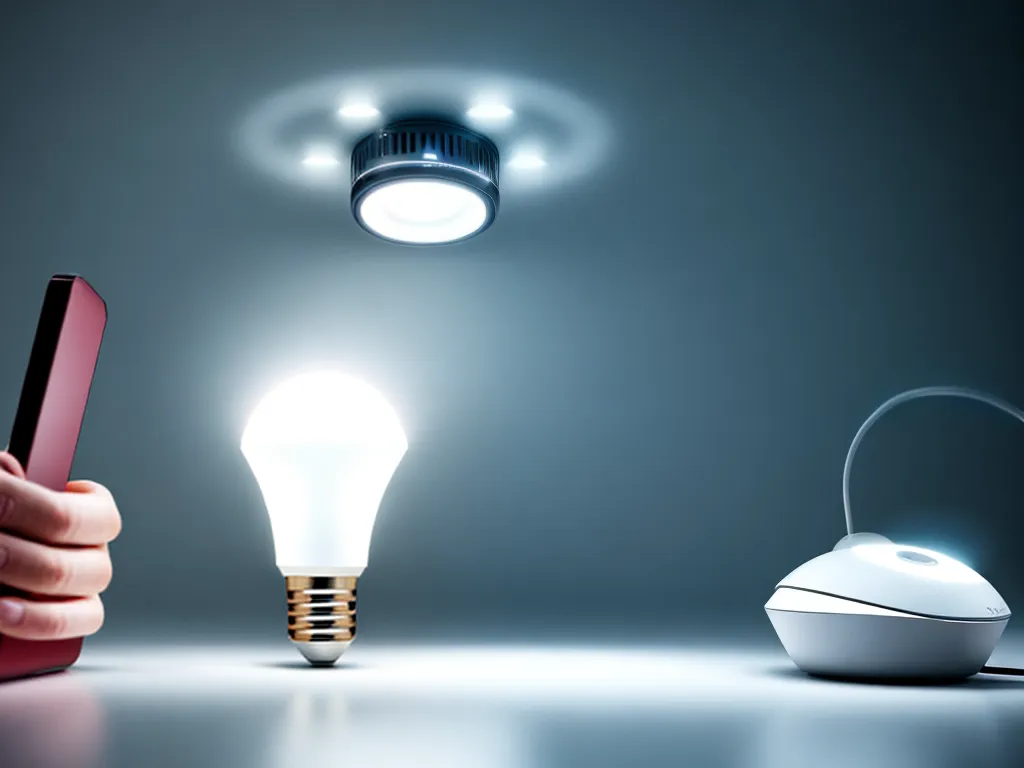LiFi: High Speed Wireless Communication Powered by LEDs
Introduction
Visible light communication (VLC), also known as LiFi, is an emerging wireless communication technology that uses light from light-emitting diodes (LEDs) to transmit data. LiFi provides connectivity similar to WiFi but uses visible light instead of radio frequencies. This article explores the technology behind LiFi, its advantages over WiFi, current applications, and the future outlook for this exciting new wireless communication method.
How LiFi Works
LiFi uses LEDs to transmit data by varying the intensity of the light at extremely high speeds. The LEDs can be switched on and off very quickly that the human eye cannot detect, so the output appears constant. However, a photodetector can decode these visual signals into binary data.
LiFi uses a similar concept as fiber optic technology but with LED light waves instead of infrared light. The main components of a LiFi system are:
-
LED transmitter – An LED light bulb that encodes and transmits data by switching on and off at high speeds.
-
Photodetector receiver – An optical sensor that detects the subtle changes in light intensity and converts the light signals into electrical signals.
-
Modulation technique – Variations in amplitude, frequency, or phase of light to encode binary data. LiFi primarily uses optical OFDM (Orthogonal Frequency Division Multiplexing).
-
Microcontroller – Encodes and decodes data from electrical signals to light signals and vice versa.
LiFi operates in the visible light spectrum with wavelengths from 380nm to 750nm. By modulating the light with encoded data, the LED transmitter can achieve speeds up to 224 Gbps in lab conditions. The light spectrum is 10,000 times larger than the radio frequency spectrum used by WiFi, providing more bandwidth for LiFi.
Advantages of LiFi over WiFi
LiFi has some key advantages compared to WiFi:
-
High speeds – LiFi offers speeds up to 100 times faster than WiFi. LiFi has achieved speeds up to 224 Gbps in the lab.
-
Security – Light cannot penetrate walls which containment the data within a closed area. This makes LiFi useful in high security environments.
-
No interference – Light waves do not interfere with other waves like radio waves. Multiple LiFi access points can be installed without interference.
-
Availability – LED lights are nearly ubiquitous, allowing easy deployment of LiFi networks by upgrading LED installations.
-
Efficiency – LiFi uses less power than WiFi and does not create electromagnetic interference.
Current Applications of LiFi
LiFi is still an emerging technology but is already being applied in the following areas:
Indoor Networking
- LiFi provides localized wireless networks with high speed connectivity. It can provide connections to multiple users in closed environments like offices, malls, airplanes etc.
Hospitals
- LiFi allows high speed connectivity without interfering with medical devices. This makes it useful for modernizing hospitals and healthcare facilities.
Aviation
- Airlines are testing LiFi for providing in-flight entertainment systems. It can also be used for flight tracking and communication.
Underwater
- LiFi can work underwater where WiFi fails. This opens up applications for marine research, deep sea explorations, submarines etc.
Hazardous Environments
- LiFi can safely work in areas with flammable materials where WiFi could spark fires. This is useful in petroleum plants, chemical facilities etc.
Location Based Services
- LED lights can transmit encoded data that reveals location information within a building. This helps with asset tracking and proximity-based messaging.
The Future of LiFi
LiFi is still in development with huge potential for future applications. Here are some future possibilities for LiFi:
-
Internet of Things (IoT) – LiFi is ideal for machine-to-machine communication in the Internet of Things. Data can be transmitted safely and efficiently between devices.
-
Self-driving cars – Vehicles can use LiFi to communicate with each other and traffic systems to enable autonomous driving.
-
Augmented reality – LiFi can be used to provide fast, seamless augmented reality experiences by integrating AR devices with LED lighting.
-
Disaster relief – LiFi networks can provide reliable connectivity during natural disasters when other communication systems are damaged.
-
5G networks – LiFi could provide high density wireless networks that complement 5G cellular infrastructure in urban areas.
-
6G networks – Future 6G networks may adopt LiFi as a significant wireless communication technology along with traditional radio frequencies.
The possibilities are endless as LiFi research continues to maximize the potential of visible light for transmitting data. With the proliferation of LED lighting, LiFi could become a ubiquitous communication network of the future.
Conclusion
LiFi leverages LED lighting to provide high speed, reliable, and secure wireless communication through visible light. Though still an emerging technology, LiFi offers significant advantages over WiFi and huge potential for future applications across industries. With further development, LiFi could become an indispensable wireless network that complements WiFi and cellular connectivity. The future looks bright for LiFi!













